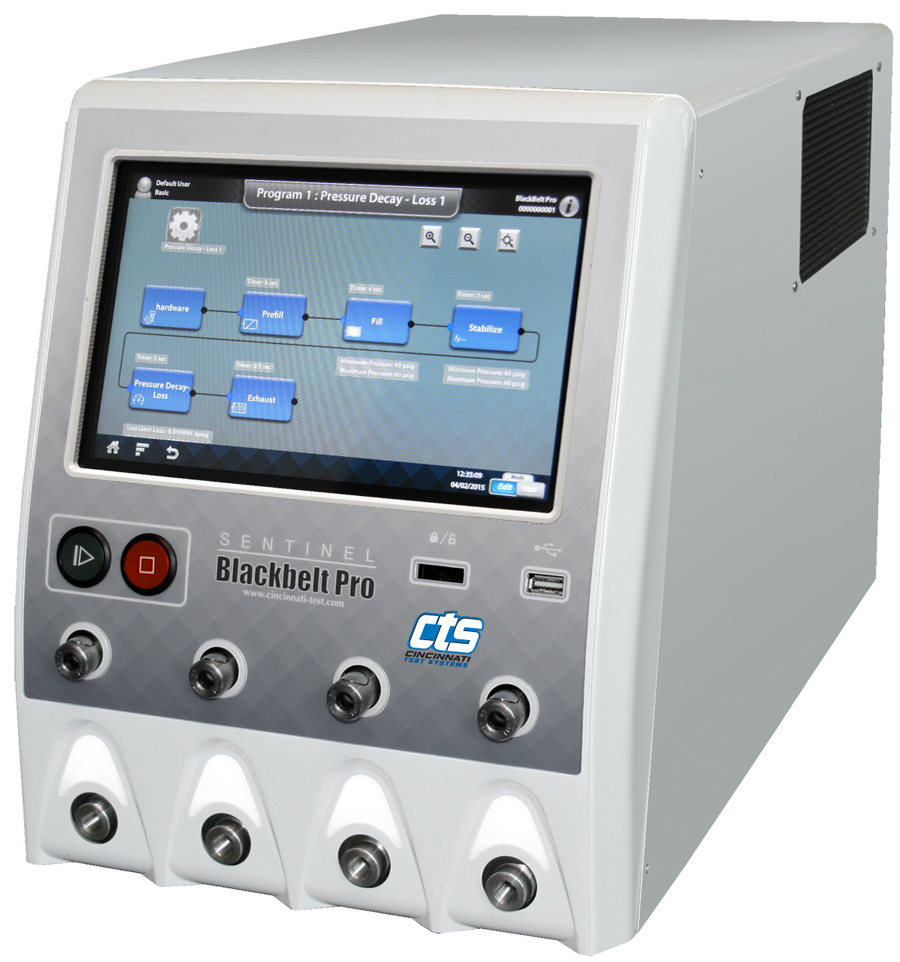Medical Multi-Lumen Cather Leak and Flow Testing
September 8, 2015
Medical Multi-Lumen Cather Leak and Flow Testing
Market driver:
A medical device manufacturer needed a test instrument to test single, dual, triple and quadruple lumen CVC & PICC Catheters with female Luer fittings. The distal ends of these Catheters are tipped and skive holes cut into each lumen. The manufacturer requested automated testing that would be initiated by the operator and run through the complete test without operator intervention. Each lumen is independently tested for cross-over leaks between lumens, exterior leaks and grade the degree of blockage of each lumen. The device manufacturer also wanted the flexibility to simultaneously run either: 4 single lumen catheters, 2 dual lumen catheters, or either 1 triple or 1 quadruple lumen catheter each test cycle.
Test requirements:
• Perform a pressure decay test on each lumen independently looking for lumen-to-lumen cross-over and exterior leakage.
• Perform a blockage test on each lumen independently.
CTS solution:

CTS Blackbelt Pro benchtop instrument was an ideal fit for this application offering multi-test, multi-port, and multi-channel testing and performing automated Pressure Decay leak and Mass Flow blockage tests on the Catheter. For this application the Blackbelt Pro will be configured with 4 test ports; one port assigned for each lumen, a combination mechanical and electronic regulators, and four 30-3000 scc/m mass flow transducers providing the ability to independently test each lumen for blockage at lower pressures. Each Blackbelt Pro test port was equipped with a CTS Connect female Luer seal to minimize the time to mate the part to the instrument and begin the test. The operator connects each proximal lumen to the assigned Blackbelt Pro port. The distal end of each catheter is connected to a special CTS Connect designed to seal the skive holes on the distal ends of each Catheter variation when running leak tests and open to atmosphere during flow testing. The Pro’s test program controls the activation and deactivation of each Connect automatically based on user desired setup.
This configuration allowed the manufacturer to easily switch between testing of up to 4 single lumen catheters or 2 dual lumen catheters simultaneously, or alternately 1 triple or quadruple lumen catheter each cycle by simply exchanging interchangeable noses on the Luer Connects on each port as well as the distal Connect sealing on the skive holes of each model.
For single lumen Catheters, after all test connections are established, pressing the Pro’s start button initiates the program for testing all four Catheters simultaneously first for leakage and then for blockage. At the start of test, the distal Connect seals on the skive holes and performs a Pressure Decay leak test. Provided the individual part passes the leak test, the Pro automatically releases the seal of the distal end of the Catheter and executes a Mass Flow blockage test. Only if both leak and flow tests pass will that individual channel indicate the part was a final ‘Accept’. If either test fails, the channel indicates the part is a ‘Reject’.
Similarly for dual, triple and quadruple lumen Catheters, both leak and blockage tests are performed on each lumen however, only one lumen on each part may undergo testing at a time and the other lumens of that same catheter must be vented to atmosphere to allow for individual lumen-to-lumen and exterior leakage. Thus each lumen is tested sequentially for multi-lumen models.
The Pro is able to store the last 1,000,000 test results in onboard memory and log the individual operator who executed each test and part of the result data.
Attachments:
| 
